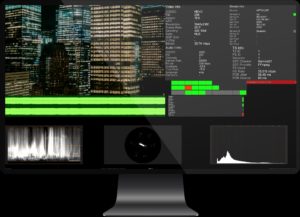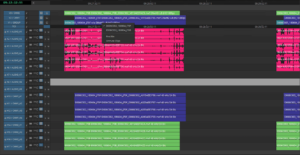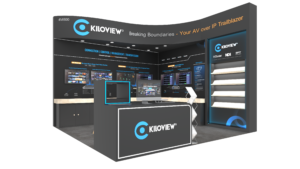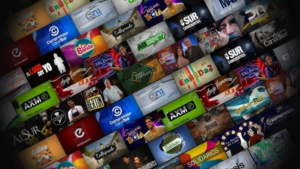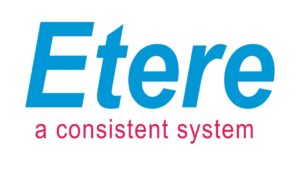
Ignacio Revuelto Rosello,
Product Marketing Manager - Playout, Imagine Communications
It has become almost compulsory to start all media articles with a statement along the lines that life used to be simple with a small number of broadcast channels, and now we have sources which will give us the content we want, when we want it, on the device which is to hand at the time.
That, of course, is true. But what are the practical implications of this change? Most important — whether you are a broadcaster, a streaming service or a content owner — how do you reach your audience, deliver the experience they expect, and make a fair return on the operation?
If we go back to the traditional channel broadcast for a moment, what were the characteristics? Programmes were transmitted as a linear stream, to a precisely timed and published schedule, with no gaps or crashes between content.
Commercial breaks were organised, with strict controls over how many breaks there could be; the total amount of advertising permitted in an hour and across a day; and what products could be advertised at what time of day, or even advertised at all. On top of that, broadcasters developed their own house rules, for example, to ensure the same spot did not come up in break after break — as audiences get irritated, which makes the advertisers irritated.
Consumers grew to accept and understand the language of broadcast television. When streaming services and new channels came along which did not stick to this language — many call it the “broadcast premium” — it was difficult to accept.
Advertising on nonlinear services is normally added to the stream by third-party providers who have little understanding about the broadcast premium. They simply drop commercials in with little regard for the content or the time of day, and viewers see the same ad inventory again and again and again. If the third-party ad house has not made enough sales, audiences get slates that say the programme will resume shortly. Or even black screens.
Broadcasters quite rightly take the view that they wish to maximise revenue no matter how their content reaches the audience. They better understand than other digital outlets the need to provide equal quality of service (QoS) across both their linear and digital channels.
Digital-first providers are beginning to appreciate that the broadcast premium is a real and valuable commodity and would like their audiences to be treated in the same considerate manner. They want to be like broadcasters.
Clearly what is needed is a means of treating digital services like broadcast services. That means breaking out of the technical siloes and having a unified approach to every aspect of a service, no matter how it will be delivered.
This is a transformational change. For it to work, every aspect has to be under the control of a single overarching and unified platform. It must bind together all the critical capabilities of scheduling, rights management, playout, live events and VOD, as well as ad sales, placement, serving and campaign management. Such a platform will enable media companies to deliver linear programming and VOD content, with insertion of commercials across all services, and incorporating triggers for local and dynamic ad insertion.
In short, it must provide a means of managing and monetising broadcast, OTT, FAST, pop-up and video content, from one dashboard. It must deliver the broadcast premium, and it must be simple to implement and operate, aiming to maximise revenues while optimising overheads.
Earlier this year, Imagine Communications introduced Imagine Aviator™ to address this requirement. Unsurprisingly, it was designed from the ground up to live in the cloud. It is available as software-as-a-service — a complete turnkey service. Alternatively, media companies can license the software and run it in their own cloud account.
The process is divided into three broad chapters: plan, make and monetise.
Plan covers all the stages of scheduling, including content acquisition and rights management.
Make oversees the media supply chain and secure content storage, as well as providing playout to the premium standards expected from Imagine’s long history in the sector. Because it is designed for one-stop control of multiple outputs, each channel can have multiple variants for different platforms and for regionalisation. Commercials and trailers appropriate for each platform, including catch-up and VOD, can be inserted by the playout functionality of Aviator, or they can be marked with SCTE 35 signals for downstream dynamic ad insertion.
The third chapter, monetise, is self-explanatory. By taking a common view of advertising across all platforms, it ensures optimum use of the ad inventory. Through intelligent ad decisioning, it provides advertisers with proven audience reach and accurate targeting, by using any appropriate platform to guarantee the CPM. It does this while delivering broadcast-style placements across the outputs, ensuring audiences get the commercials that are appropriate and are not bored by repetition.
Hosting it in the cloud provides the elasticity to adjust requirements as needs change. The cloud offers flexibility, limitless capacity and global reach. The ad placement routines, for example, are designed for 10 million decisions per second, so even the largest media enterprise can be sure that every break is accurately filled; every campaign reaches its promised targets.
The cloud also gives the system complete scalability, which means channels can be initiated from scratch, integrated into the plan/make/monetise routines, and be on air or online in hours or even minutes in some instances, rather than months. Pop-up channels for music festivals or major sports events can be exactly that: popped up when needed, taken down when finished.
The media enterprises that succeed will be the ones that attract and retain an audience, which means delivering not just the content but the experience they want: engaging and appropriate, as well as professional. They need to do this while minimising operational costs — allowing maximum investment in content — and competing for the highest revenues.
To achieve that depends upon the skill, flair and experience of the broadcast executive. They deserve technology platforms that support their skills without restriction and without limitations.
